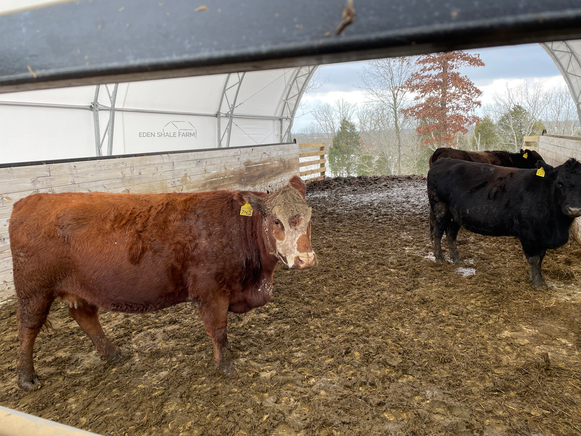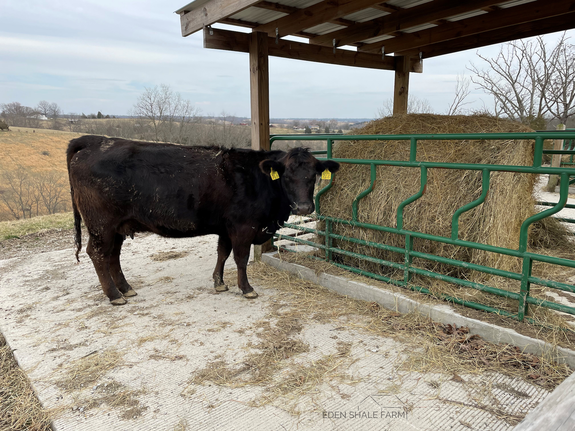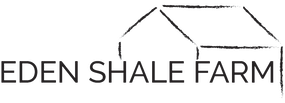|
Rotational grazing is not a new concept. We have all heard the term and understand the principles behind the practice. If you constantly move the animals to a fresh pasture, they get exposed to fresh grass while distributing manure evenly over multiple areas and reducing the impacts on each individual field. At Eden Shale we implement this same concept with our cow herd while feeding hay, call it rotational winter feeding if you will. From the time our stockpiled fescue runs out until we turn out on new grass in the spring, the cows utilize four different fields. Let’s call them Pasture A, B, C & D. This year we were able to graze stockpiled fescue until January 15th. At that point the cows were moved into Pasture A (which is actually 60 acres of woods with 5 acres of pasture). Pasture A utilizes the Large Bale Feeder to feed hay to the cows. The cows spent 40 days at this location and ate a total of 32 roll bales from the feeder. For more information about how this feeder performed, check out the previous blog post. During this time frame the cows created mud/manure at the feeder that never exceeded hoof deep (about 6-8 inches). On February 24th the cows were moved to Pasture B. While in Pasture B the cows have access to the calving barn where they come in to eat their hay from fence line feeder style feeders inside the barn. The cows calve in Pasture B, and as they do, we will put the new pairs in the barn for 24-48 hours. While in the barn we tag the calves and make sure that everything is fine with mother and baby before we turn them out. When they get turned out of the calving barn they go into Pasture C. The young pairs will stay in Pasture C for 7-10 days. This pasture has access to the calving barn and working facilities should the need arise. There is a feeding pad consisting of geotextile fabric and dense grade aggregate (DGA) where the cattle eat their hay from traditional hay rings. The cows ultimately spend the least amount of time at this location. After 7-10 days the pairs are moved into Pasture D. We moved the first group of cows into Pasture D on March 10th. This is a larger pasture where the cows will stay until the grass is ready later in the spring. In Pasture D we utilize the Fenceline Feeding System. We have the ability to feed the entire herd at this location, which we will be doing right before spring turnout. During calving season the cows will all be rotated (as they calve) from Pasture B, to Pasture C, and finally to Pasture D. This rotation places the calves on fresh ground when they are the youngest and most sensitive to environmental conditions. Having the cows on clean pasture means that their udders stay cleaner and helps combat scours in the new calves. Likewise, the new pastures offer dry places for the calves to lay down, and has completely eliminated broken legs and stomped calves around the hay feeding locations. Rotating cows through this system also allows the mud/manure creation at each location to be reduced and managed. Before calving season all the barns and feeding locations are scraped clean. This allows us to go the entire calving season without having to scrape the facilities again. The facilities will get cleaned and the manure spread on hay ground sometime in June. If you try to feed hay in the same location all winter long, you better be equipped to manage and store large amounts of manure. While developing multiple locations to rotate the cows to through out the winter may seem excessive, it has drastically increased the survivability of our calves, and the efficiency of our operation, but ultimately isn’t that what we are all trying to do? Comments are closed.
|
Archives
June 2024
Categories
All
Welcome |
CONTACT US |
EMAIL SIGN UP |
|
Eden Shale Farm
245 Eden Shale Rd. Office: (859) 278-0899 Owenton, KY 40359 Fax: (859) 260-2060 © 2021 Kentucky Beef Network, LLC.. All rights reserved.
|
Receive our blog updates
|



 RSS Feed
RSS Feed
